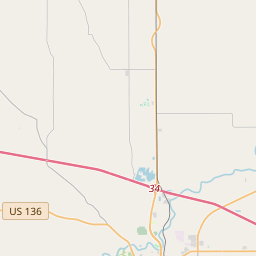Veedersburg
Historical marker location:
Veedersburg, Indiana
( Marker is at the intersection of East 2nd Street and Sugar Street, on the right when traveling west on East 2nd Street.)
Marker installed: 2010







© OpenStreetMap contributors
More history nearby
The world's largest children's museum is located in Indianapolis. The Children's Museum of Indianapolis covers over 480,000 square feet and has more than 120,000 artifacts and specimens.
About Fountain County
Fountain County Timeline
Fountain County, located in the western part of Indiana, has a rich history that dates back to the early 1800s. The area was originally inhabited by Native American tribes, including the Miami and Kickapoo, who thrived on the fertile land along the Wabash River.
European settlers began to arrive in the late 1810s, attracted to the area's natural resources and fertile soil. The county was officially established in 1826 and named after the many natural springs and fountains found throughout the region. During this time, agriculture became the primary industry in the county, with corn, wheat, and livestock farming playing a crucial role in the local economy.
In the mid-19th century, Fountain County experienced significant growth with the construction of railroads, which facilitated trade and transportation in the area. The county became an essential transportation hub, connecting the Wabash and Erie Canal to other parts of Indiana. The arrival of the railroads also contributed to the development of several towns within Fountain County, including Attica, Covington, and Hillsboro.
During the Civil War, Fountain County was deeply divided, with some residents supporting the Union and others sympathizing with the Confederacy. Several skirmishes and raids occurred in the area, as both sides vied for control over the strategic Wabash River. The war had a lasting impact on the county, leading to the division of families and the loss of many lives.
Today, Fountain County continues to be known for its agricultural heritage and scenic landscapes. The county is home to a variety of farms, vineyards, and orchards, emphasizing its importance in Indiana's farming industry. With its rich history and natural beauty, Fountain County attracts visitors who appreciate its charming small towns, historic sites, and outdoor recreational opportunities.
European settlers began to arrive in the late 1810s, attracted to the area's natural resources and fertile soil. The county was officially established in 1826 and named after the many natural springs and fountains found throughout the region. During this time, agriculture became the primary industry in the county, with corn, wheat, and livestock farming playing a crucial role in the local economy.
In the mid-19th century, Fountain County experienced significant growth with the construction of railroads, which facilitated trade and transportation in the area. The county became an essential transportation hub, connecting the Wabash and Erie Canal to other parts of Indiana. The arrival of the railroads also contributed to the development of several towns within Fountain County, including Attica, Covington, and Hillsboro.
During the Civil War, Fountain County was deeply divided, with some residents supporting the Union and others sympathizing with the Confederacy. Several skirmishes and raids occurred in the area, as both sides vied for control over the strategic Wabash River. The war had a lasting impact on the county, leading to the division of families and the loss of many lives.
Today, Fountain County continues to be known for its agricultural heritage and scenic landscapes. The county is home to a variety of farms, vineyards, and orchards, emphasizing its importance in Indiana's farming industry. With its rich history and natural beauty, Fountain County attracts visitors who appreciate its charming small towns, historic sites, and outdoor recreational opportunities.
Fountain County Timeline
This timeline provides a condensed summary of the historical journey of Fountain County, Indiana.
- 1816: Fountain County is established by the Indiana General Assembly
- 1826: Covington becomes the county seat of Fountain County
- 1831: First school is established in the county
- 1836: Construction of the Wabash and Erie Canal begins in the county
- 1847: The first railroad is completed in Fountain County
- 1861-1865: Fountain County residents serve in the American Civil War
- 1871: The first public library is established in Covington
- 1913: The first electric service is provided in the county
- 1943: The U.S. Army establishes the Newport Chemical Depot in the county
- 1974: Historic covered bridge, the Portland Mills Bridge, is partially destroyed by arson
- 1998: The Hoosier Heartland Highway connects Fountain County to Lafayette